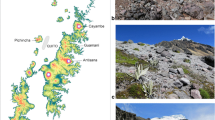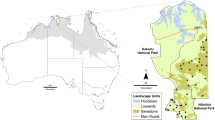Abstract
Common methods to assess diversity and abundance of Orthoptera are sweep netting, transect counts and box-quadrat sampling. Pitfall trapping, by contrast, is rarely used, and the value of this method is still being questioned. In 2008, we studied Orthoptera species richness and abundance in five vegetation types along a gradient of dune succession on the Baltic Sea island of Hiddensee (NE Germany) by comparing transect-count and pitfall-trapping data. Using transect counts, 12 species were detected in the study area. With pitfall traps, three chorto- and thamnobiont Ensifera species (C. dorsalis, M. roeselii and T. viridissima) were not caught at all, and it was only in low-growing and sparsely-vegetated grey dunes that all present species were detected. With pitfall traps, the proportion of present species recorded strongly declined with increasing height and density of the vegetation type. Assuming that transect counts are a good proxy for relative Orthoptera densities, densities ascertained by pitfall traps are strongly biased by vegetation structure and locomotive behaviour of the species. More than 80% of all individuals were caught in sparsely-vegetated grey dunes. Frequency patterns of the species also differed. Using pitfall traps, especially chortobiont species were significantly underrepresented. Qualitative and quantitative sampling of Orthoptera using pitfall traps seems only reasonable in habitats with low and sparse vegetation and a high proportion of geobiont species.



Similar content being viewed by others
References
Báldi A, Kisbenedek T (1997) Orthopteran assemblages as indicators of grassland naturalness in Hungary. Agric Ecosyst Environ 66:121–129. doi:10.1016/S0167-8809(97)00068-6
Barber HS (1931) Traps for cave-inhabiting insects. J Elisha Mitchell Sci Soc 46:259–266
Behrens M, Fartmann T (2004) Die Heuschreckengemeinschaften isolierter Schieferkuppen der Medebacher Bucht (Südwestfalen/Nordhessen). Tuexenia 24:303–327
Bellmann H (2006) Der Kosmos Heuschreckenführer. Kosmos, Stuttgart
Bieringer G, Zulka KP (2003) Shading out species richness: edge effect of a pine plantation on the Orthoptera (Tettigoniidae and Acrididae) assemblage of an adjacent dry grassland. Biodivers Conserv 2:1481–1495. doi:10.1023/A:1023633911828
Chao A (1984) Nonparametric estimation of the number of classes in a population. Scandinavian J Statistics 11:265–270
Chao A, Ma M-C, Yang MCK (1993) Stopping rule and estimation for recapture debugging with unequal detection rates. Biometrika 80:193–201
Coray A, Lehmann AW (1998) Taxonomie der Heuschrecken Deutschlands (Orthoptera): formale Aspekte der wissenschaftlichen Namen. Articulata, Beiheft 7:63–152
Curry JP (1994) Grassland invertebrates—ecology influence on soil fertility and effects on plant growth. Chapman and Hall, London
Fartmann T, Mattes H (1997) Heuschreckenfauna und Grünland–Bewirtschaftungsmaßnahmen und Biotopmanagement. Arbeiten aus dem Institut für Landschaftsökologie 3:179–188
Gardiner T, Hill J (2006) A comparison of three sampling techniques used to estimate population density and assemblage diversity of Orthoptera. J Orthoptera Res 15:45–51. doi:10.1665/1082-6467(2006)15[45:ACOTST]2.0.CO;2
Gardiner T, Hill J, Chesmore D (2005) Review of the methods frequently used to estimate the abundance of Orthoptera in grassland ecosystems. J Insect Conserv 9:151–173. doi:10.1007/s10841-005-2854-1
Gotelli NJ, Colwell RK (2001) Quantifying biodiversity: procedures and pitfalls in the measurement and comparison of species richness. Ecol Lett 4:379–391
Gottschalk E, Griebeler EM, Waltert M, Mühlenberg M (2003) Population dynamics in the Grey Bush Cricket Platycleis albopunctata (Orthoptera: Tettigoniidae)—What causes interpopulation differences? J Insect Conserv 7:45–58. doi:10.1023/A:1024706030658
Hammer O, Harper DAT, Ryan PD (2001) PAST: Palaeontological Statistics software package for education and data analysis. Palaeontologia Electronica 4:1–9
Harvey P, Gardiner T (2006) Pitfall trapping of scarce Orthoptera at a coastal nature reserve in Essex, UK. J Insect Conserv 10:371–373. doi:10.1007/s10841-006-9013-1
Horstkotte J, Lorenz C, Wendler A (1994) Heuschrecken–Bestimmung, Verbreitung, Lebensräume und Gefährdung aller in Deutschland vorkommenden Arten. DJN (Dtsch Jugendbund f Naturbeobachtungen), Hamburg
Ingrisch S (1977) Beitrag zur Kenntnis der Larvenstadien mitteleuropäischer Laubheuschrecken (Orthoptera: Tettigoniidae). Z angew Zool, NF 64:459–501
Ingrisch S, Köhler G (1998) Die Heuschrecken Mitteleuropas. Westarp Wissenschaften, Magdeburg
Isern-Vallverdú J, Pedrocchi C, Voisin JF (1993) A comparison of methods for estimating density of grasshoppers (Insecta: Orthoptera) on Alpine pasturelands. Rev Ecol Alpine II:73–80
Joern A (1986) Experimental study of avian predation on coexisting grasshopper populations (Orthoptera: Acrididae) in a sandhill grassland. Oikos 46:243–249. doi:10.1603/0046-225X(2005)034[1114:DAIEOA]2.0.CO;2
Kliewe H (1951) Die Klimaregionen Mecklenburgs—eine geographische Untersuchung ihrer Ursächlichkeit nach Mittelwert—und witterungsklimatischer Methode. Dissertation, University of Greifswald
Köhler G, Kopetz A (1993) Veränderungen in Heuschrecken (Saltatoria)-Assoziationen als Folgen der Verbuschung von Kalktrockenrasen. Arch für Nat Lands 32:147–159
Köhler G, Weipert J (1991) Beiträge zur Faunistik und Ökologie des Naturschutzgebietes „Apfelstädter Ried”, Kr. Erfurt-Land. Teil IV—Orthoptera: Saltatoria. Arch Nat.schutz Landsch forsch 31(3):181–195
Kopetz A, Köhler G (1991) Sukzessionsbedingte Veränderungen von Arthropoden-Assoziationen auf Kalktrockenrasen. Zool Jb Syst 118:391–407
Kruess A, Tscharntke T (2002) Grazing intensity and the diversity of grasshoppers, butterflies, and trap-nesting bees and wasps. Conserv Biol 16:1570–1580. doi:10.1046/j.1523-1739.2002.01334.x
Magurran AE (2004) Measuring biological diversity. Blackwell, Oxford
Möbus G (2000) Geologie der Insel Hiddensee (südliche Ostsee) in Vergangenheit und Gegenwart eine Monographie. Greifswalder geowissenschaftliche Beiträge 1–130
Nagy A, Sólymos P, Rácz IA (2007) A test on the effectiveness and selectivity of three sampling methods frequently used in orthopterological field studies. Entomologica Fennica 18:149–159
Oschmann M (1969) Bestimmungstabellen für die Larven mitteldeutscher Orthopteren. Deutsche Entomol Z, NF 16(I–III):277–291
Perner J, Reinhardt K, Samietz J (1996) Häufigkeitsmuster von Arthropoden an Grenzflächen immissionsbelasteter Rasengesellschaften. Beitr Ökol 2(1):33–50
Poniatowski D, Fartmann T (2008) The classification of insect communities: Lessons from orthopteran assemblages of semi-dry grasslands in central Germany. European J Entomology 105:659–671
Rácz IA (1998) Biogeographical survey of the Orthoptera fauna in the central part of the Carpathian Basin (Hungary): fauna types and community types. Articulata 13:53–69
Reinhard H (1962) Klimatologie. Atlas der Bezirke Rostock, Schwerin und Neubrandenburg. VEB Topographischer Dienst, Schwerin
Remmert H (1978) Das Walberla 1973–1977: Untersuchungen in einem fränkischen Mesobrometum. Ber Akad Naturschutz Landschaftspflege (ANL) 2:4–16
Samways MJ (1997) Conservation biology of Orthoptera. In: Gangwere SK, Muralirangan MC, Muralirangan M (eds) The Bionomics of Grasshoppers Katydids and their Kin. CAB International, Wallingford, pp 481–496
Sänger K (1977) Über die Beziehungen zwischen Heuschrecken (Orthoptera: Saltatoria) und der Raumstruktur ihrer Habitate. Zool Jb Syst 104:433–488
Siemann E, Tilman D, Haarstad J (1999) Abundance, diversity and body size: patterns from a grassland arthropod community. J Anim Ecol 68:824–835. doi:10.1046/j.1365-2656.1999.00326.x
Wettstein W, Schmid B (1999) Conservation of arthropod diversity in montane wetlands: effect of altitude, habitat quality and habitat fragmentation on butterflies and grasshoppers. J Appl Ecol 36:363–373. doi:10.1046/j.1365-2664.1999.00404.x
Wranik W, Meitzner V, Martschei T (2009) Verbreitungsatlas der Heuschrecken Mecklenburg-Vorpommerns Landesamt für Umwelt. Naturschutz und Geologie Mecklenburg-Vorpommern, Schwerin
Zuur AF, Ieno EN, Walker NJ, Saveliev AA, Smith GM (2009) Mixed Effects Models and Extensions in Ecology with R. Springer, Berlin
Acknowledgments
We would like to thank the national park “Vorpommersche Boddenlandschaft” for the permission to conduct the study in the protected area. We are grateful to Dominik Poniatowski for critical comments on earlier versions of the manuscript and Jasmin Lendzion for her help with the fieldwork. The study was financially supported by the Bauer-Hollmann-Stiftung and is part of the research project “Biodiversity, Ecology and Management of Coastal Habitats of the Baltic Sea”.
Author information
Authors and Affiliations
Corresponding author
Rights and permissions
About this article
Cite this article
Schirmel, J., Buchholz, S. & Fartmann, T. Is pitfall trapping a valuable sampling method for grassland Orthoptera?. J Insect Conserv 14, 289–296 (2010). https://doi.org/10.1007/s10841-009-9258-6
Received:
Accepted:
Published:
Issue Date:
DOI: https://doi.org/10.1007/s10841-009-9258-6




